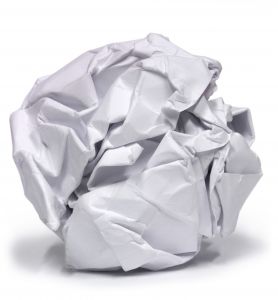 Electronic waste (e-waste) or Waste Electrical and Electronic Equipment (WEEE) are the terms used to describe old, end-of-life or discarded appliances using electricity. It includes computers, consumer electronics, batteries etc. which have been disposed of by their original users.
Electronic waste (e-waste) or Waste Electrical and Electronic Equipment (WEEE) are the terms used to describe old, end-of-life or discarded appliances using electricity. It includes computers, consumer electronics, batteries etc. which have been disposed of by their original users. 
E-waste is of concern largely due to the toxicity of some of the substances such as lead, mercury, cadmium and a number of other substances which are harmful to human health and ecosystems if not disposed of properly. When e-waste breaks down either as litter or in improper landfills, the toxic mix can leak into surface and ground waters. The material that the products are made from can be recycled to get raw material that can be reused, meaning less energy (and carbon emissions) is required in the manufacturing, mining and processing.
The unsustainably rapid turnover of discarded electronics and computer technology is another reason for the need to recycle – or even better, re-use – e-waste.
More information: www.ewasa.org
What will happen to the e-Waste?
The contractors will separate the waste into items that
- can be refurbished,
- can be recycled and
- must be safely disposed of.
Refurbishment of appliances and computers provides jobs and these items are then reused in needy schools and communities. Useful, scarce and valuable metals and other substances are extracted by recycling, while toxic e-waste is disposed of in special hazardous waste facilities. Examples of potentially toxic items include the old type of computer screens (CRT) and fluorescent tubes.
Some fast facts
Currently the University purchases on average 500 new computers per annum (without significant growth in inventory), implying that the annual e-waste stream is of a similar magnitude. At any one time 8000 PCs exist on campus, with up to 5000 more in student residences. If one considers that PCs are usually replaced on a 4 to 5-year cycle, the resulting e-waste stream could in fact be far larger.
The IT Division’s TAS division alone disposes of 300-400 lead acid batteries per annum.
To save you from your own e-clutter, you can now dump all your unwanted e-waste at IT and we’ll get rid of it FOR you. For more information, click here.
 Elektroniese afval (e-afval) is die term wat gebruik word om verouderde of weggooi-toerusting wat met elektrisiteit werk, te beskryf. Dit sluit rekenaars, enige elektroniese toerusting, batterye, ens. in wat uit die weggeruim is deur die oorspronklike eienaars.
Elektroniese afval (e-afval) is die term wat gebruik word om verouderde of weggooi-toerusting wat met elektrisiteit werk, te beskryf. Dit sluit rekenaars, enige elektroniese toerusting, batterye, ens. in wat uit die weggeruim is deur die oorspronklike eienaars.
Die toksiese inhoud van e-afval as gevolg van sekere bestanddele, soos lood, kwik, kadmium en ander stowwe hou `n gevaar in vir die mens se gesondheid en ekosisteme. Wanneer e-afval afbreek en nie op die korrekte manier van ontslae geraak word nie, kan die giftige stowwe in grond en grondwater beland. Die materiaal waarvan hierdie produkte gemaak is, kan eerder herwin word om rou materiaal te skep wat weer gebruik kan word. Gevolglik word minder energie gebruik (sowel as koolstofuitskeiding) vir vervaardiging, myn en prosesering.
Die onvolhoubare, vinnige omset van verouderde elektronika en rekenaartegnologie is nog `n geldige rede vir herwinning – of selfs beter – vir die hergebruik van e-afval.
Vir meer inigting: www.ewasa.org
Wat gebeur met e-afval?
Kontrakteurs skei die artikels in die volgende drie kategorieë. Items wat
- opgeknap kan word,
- herwin kan word en
- veilig ontslae van geraak moet word.
Opknapping van toerusting en rekenaars skep weer opsigself werk en hierdie items word dan weer gebruik in behoeftige skole en gemeenskappe. Nuttige, skaars en waardevolle metale en ander stowwe word verwyder dmv herwinning, terwyl giftige e-afval in spesiale gevaarlike afvalfasiliteite gestort word. Voorbeelde van sulke items sluit ou rekenaarskerms (CRT’s) en fluoorbuise in.
Vinnige feite
Tans koop die universiteit gemiddeld 500 nuwe rekenaars per jaar aan (sonder `n merkwaardige groei in die bateregister). Dit impliseer natuurlik dat die jaarlikse stroom e-afval van soortgelyke omvang is. Op enige gegewe tyd is daar 8000 rekenaars op kampus, met meer as 5000 in koshuise. `n Rekenaar word elke 4 tot 5 jaar vervang en dus kan die hoeveelheid e-afval nog meer wees.
Die IT-afdeling TAS (toegangsbeheer) raak elke jaar van tussen 300-400 lood suurbatterye ontslae.
Nou kan jy al jou ou rommel vir IT bring en ons sal daarvan ontslae raak VIR jou. Kliek hier vir meer inligting.
Tags: e-waste, sustainable IT


Hi Marie,
inligting oor e-afvalverwydering kan gekry word by https://stbsp01.stb.sun.ac.za/innov/it/it-help/Wiki%20Pages/E-waste.aspx
Waarnatoe kan ou rekenaars, etc geneem word? Sover ek kan agterkom word daar nie iewers in die artikel gese waar presies ons kan gaan om ontslae te raak van e-afval nie. DANKIE